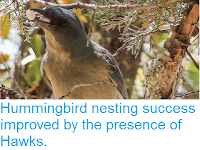Birds are considered to have the best vision in any living Vertebrate group, with almost all Birds having large eyes relative to their size and densely packed retinal neurons, along with other specialisations found in different species and groups. This is closely tied to the ecology of Birds, which typically fly, are visual foragers and rely on markings and display to find mates. However, one group of Birds, the flightless Kiwi, Apteryx spp., of New Zealand, appear to break with this pattern, having small eyes relative to their size, under-developed visual regions of the brain and the smallest visual field of any Birds. Kiwi also have a very different feeding ecology to other Birds, being nocturnal foragers on the floor of canopy forests, with highly developed senses of smell hearing and touch, particularly at the tip of the long bill, which has a unique set of mechanoreceptors (touch neurons), raising questions as to how much value vision is to a Kiwi at all.
In a paper published in the journal BMC Biology on 12 September 2017, Bret Moore of the William R. Pritchard Veterinary Medical Teaching Hospital at the University of California-Davis, Joanne Paul-Murphy of the Department of Medicine and Epidemiology, also at the University of California-Davis, Alan Tennyson of the Museum of New Zealand Te Papa Tongarewa, Christopher Murphy of the Department of Surgical and Radiological Sciences at the University of California-Davis, and the Department of Ophthalmology & Vision Science at the University of California-Davis, describe the incidence of widespread visual impairment, including blindness, in a population of wild Okarito Brown Kiwi, Apteryx rowi.
An Okarito Brown Kiwi, Apteryx rowi, on Mana Island, New Zealand, in June 2017. Leon Berard/New Zealand Birds Online.
Out of a population of 160 Kiwi examined, 53 were found to have some form of visual impairment, and four were completely blind. The Birds were found to suffer from a variety of conditions, including corneal opacification and shrunken fibrotic globes. Many of these infections appeared chronic in nature, suggesting that they were long-term conditions that had not had any undue impact on the Bird’s overall health. This included three of the completely blind specimens, which appeared healthy at the time of inspection, and which were shown by radio-tagging to survive for at least four years after the initial inspection, with one of these Kiwi going on to form a pair-bond with a visually healthy individual.
Normal and pathologic findings for the anterior segment of the Okarito Brown Kiwi. Complete ophthalmic examinations consisted of slit lamp biomicroscopy, direct ophthalmoscopy, and streak retinoscopy. Lack of vision was interpreted by no response to light or motion, combined with the severity of ocular lesions (e.g. inability to visualize intraocular structures beyond the abnormal ocular tissue, such as marked corneal or lens opacification). (a) Normal anterior segment. Note the small palpebral aperture (mean diameter 8.53 ± 0.50 mm SD, n = 9 birds). (b) Nuclear sclerosis: a normal aging change in the lens associated with changes in lens protein composition. Nuclear sclerosis generally has minimal visual consequences in animals. (c) Buphthalmia with marked corneal edema. This animal was blind bilaterally but was in good physical condition. (d) Phthisis bulbi (a globe shrunken with fibrosis). Potential causes include any chronic inflammatory or glaucomatous process or severe trauma. (e), (f) Resorbing, end-stage cataracts. (g) Anteriorly luxated cataract. h Inferiorly luxated cataract. Moore et al. (2017).
From this Moore et al. conclude that the loss of vision has no real impact on Kiwi. They suggest that while the Birds may use vision to determine the difference between night and day, useful for determining when to forage, but do not appear to need working vision to obtain food (indeed they cannot see the tips of their beaks, their principle foraging tool), nor to obtain a mate. They suggest that Kiwi may be in the process of losing their vision by regressive evolution, i.e. vision is no longer being selected for, so the visual abilities of the Birds are slowly degenerating as deleterious mutations build up in the DNA regions which govern vision.
See also...
Follow Sciency Thoughts on
Facebook.








